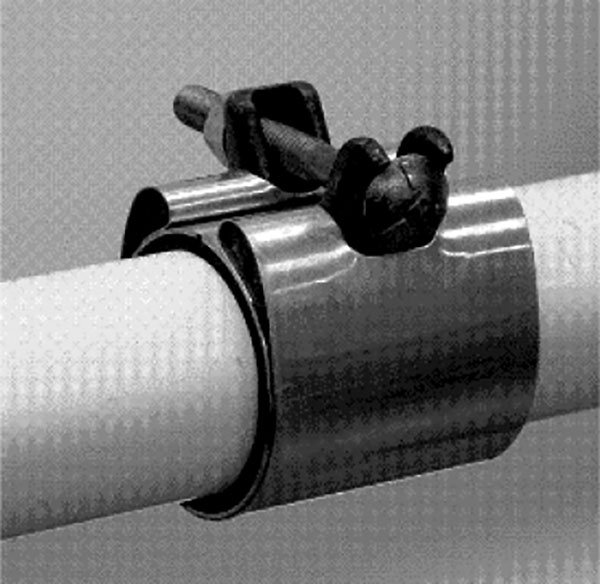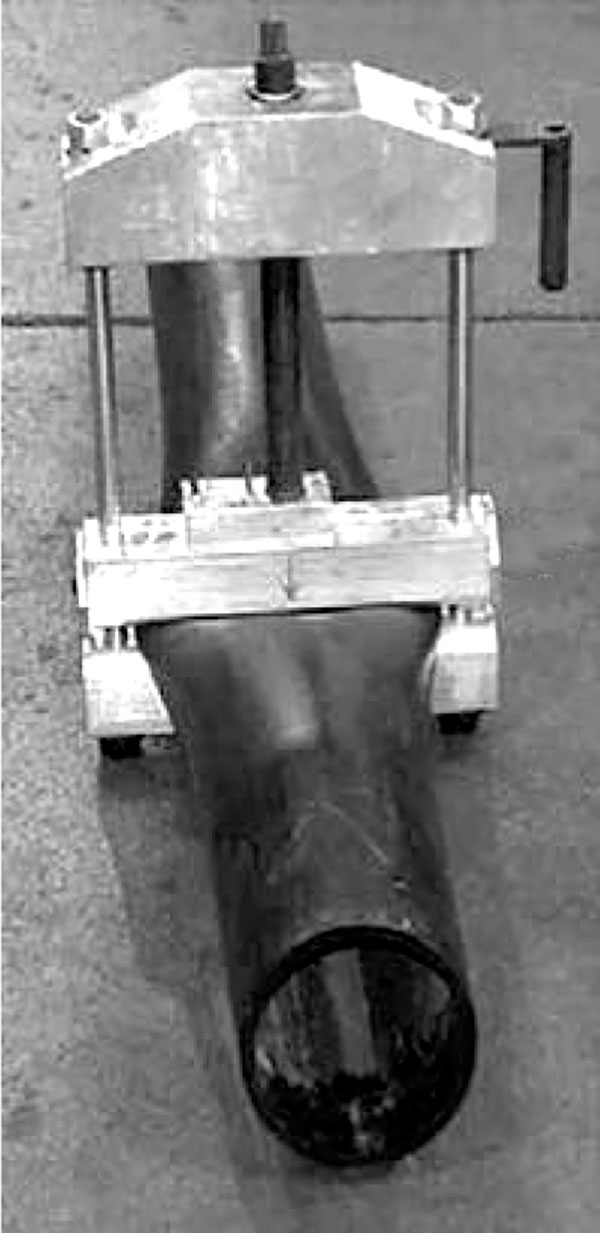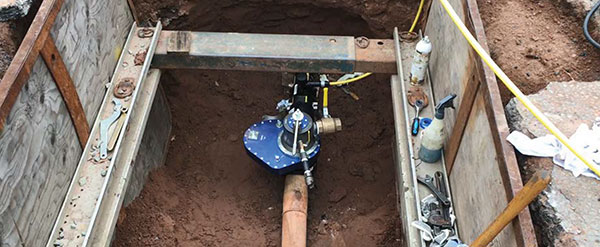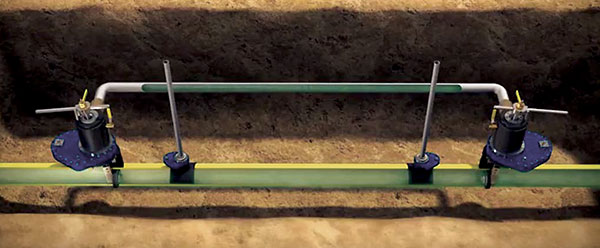October 2018, Vol. 245, No. 10
Features
Controlling and Stopping Flow in Polyethylene (PE) Natural Gas Pipelines
By Bryan Kortte, Marketing Manager, Gas Products, Mueller Co.

When polyethylene (PE) pipes were first introduced to gas distribution in the late-1960s, they offered a significant upgrade in terms of cost efficiency, durability and ease of installation. Since then, PE pipes have come to dominate the landscape of gas distribution systems.
In the United States and Canada, more than 90% of natural gas distribution systems use PE pipes in their installations. PE pipes are also used in a majority of installations in Australia and are increasingly used in pipelines around the world.
The advantages of PE pipes in gas distribution are clear when compared with traditional metal piping systems. Unlike metal pipes, PE pipes are not susceptible to corrosion or rust, and they are extremely resistant to cracks caused by environmental stresses. As PE pipes are lightweight, flexible and easy to store, installation and maintenance of distribution systems is simplified dramatically compared to metal piping. PE pipes require less energy to manufacture than metal pipe products and their superior longevity makes them more cost-efficient.
While PE pipes offer improved longevity and durability, it is occasionally necessary to perform maintenance or make emergency repairs. From replacements of older fittings and joints, to line relocation projects or installations of isolation valves, it is essential for utilities to be able to isolate flow in PE distribution lines. There are a number of methods to do this and each has its strengths and weaknesses in terms of efficiency, reliability and long-term impact on a PE piping system.
While there are several established ways to control and stop flow in PE pipes, new techniques have emerged and are worth considering. Here are some options and the advantages and disadvantages that should help you in evaluating the best method for your PE pipeline.
Squeezing
Because of the flexible and rugged qualities of PE pipes, squeezing or squeeze-off was established several decades ago as an effective means of flow control. Squeezing is performed by compressing PE pipe between parallel bars. Complete shut-off is achieved when the inside surfaces make contact.
While the technique is simple, it requires specially-designed squeeze-off tools that must be calibrated to the specific diameter and standard dimension ratio of the pipe. Proper equipment and performance allow the procedure to be performed effectively without inflicting long-term damage to the pipe.
Squeeze-off tool
Advantages: PE gas distribution networks have isolation valves at critical locations, allowing for sections of the system to be isolated for maintenance. Squeezing allows for localized isolation when existing isolation valves are insufficient to handle maintenance or emergency repairs. Squeezing is also a useful flow control technique for making installation tie-ins.
The ruggedness and flexibility of polyethylene enables the pipe to regain its original diameter when the squeeze-off tools are released without any structural damage.
When compared with flow control in metal distribution systems, squeezing offers considerable advantages in terms of speed and cost. With the proper equipment, squeeze-off can be performed very quickly, leading to reduced maintenance costs and minimal service interruptions.
Limitations: If incorrect equipment is used, or if the correct equipment is used inappropriately, it can cause unacceptable strain on the pipe. Squeezing can only be safely performed once it is in a single area; repeated flow control requires a different isolation technique or the installation of a valve. All other methods of controlling and stopping flow can be conducted repeatedly, as the entry point that has been tapped into a pipeline can be easily reused as necessary.
Squeezing is only suitable for complete flow shut-off. Throttling or partial flow control is not possible through squeezing and some seepage can occur in larger pipes or in some high-pressure situations. In these cases, two squeeze-offs may be performed, with all maintenance being performed downstream of the second squeeze-off. If downstream pipeline flow is required, additional bypass fittings must be installed as squeezing has no integral bypass capability as in line stopping or other methods.
Bagging Isolation
The bagging isolation technique is performed by deploying a mechanical saddle fitted with an integral valve. An entry point is established through hot tap drilling, and the bag is inserted using a bag tube that is connected to the saddle. In many cases, two bags are installed in a series to create a double block and bleed isolation.
Advantages: In comparison to squeezing, bagging does not involve any deformation of the PE pipe. Bagging does not pose the risk of damage or pipe failure associated with improper performance of squeezing for flow isolation. It also reduces the area required for excavation when conducting a flow control procedure.
Limitations: Bagging isolation can result in failure should the bag burst during the flow control procedure. The risk factor for bag failure is associated with the diameter and operating pressure of the pipe, with larger and higher-pressure pipelines carrying an increased risk of bursting. Bag failure can also be caused by operator error or if the materials are in poor condition.
Due to the risk of bag failure, flow control through bagging isolation is suitable only in low-pressure applications. Double block and bleed procedures are recommended to mitigate the risk of bag failure, but a failure of both bags could result in a substantial amount of gas being released downstream. PE pipes pose an additional risk when compared with metal systems: the smooth inner walls of PE pipelines provide less grip for the bag material, introducing the possibility of one or more bags slipping due to differences in pressure.
Hybrid Bagging Isolation/Iris
The hybrid bagging isolation/Iris flow-stopping technique makes use of bagging with the addition of metal supports for the inflated bags. The metal fan Iris is inserted into the pipe in its closed position and can be opened to fully support the inflated bag.
Advantages: Hybrid isolation supports increased operating pressures and larger diameters that would carry a risk of bag failure without the introduction of the metal Iris.
Limitations: This method only increases the acceptable pipe diameter and operating pressure for safe performance. Hybrid isolation is still not safe for high-pressure operations.
In some instances, full-encirclement-type band clamps are used to reinforce wall thickness after squeezing has been performed on a PE pipe. Repair clamps may also be used to cover accidental puncture holes or abandoned service line connections. Repair clamps on PE pipes can help to maintain structural integrity.
Repair clamp
Advantages: Repair clamps can offer a convenient, effective and safe means of restoring the integrity of an in-service pipeline, without cutting out a section of pipe. These clamps can also help reinforce wall thickness after a squeeze-off procedure is performed.
Limitations: The circumstances in which repair clamps can be safely and effectively used are extremely limited. Repair clamps are only temporary and can only be deployed in areas where the pipe can maintain its structural integrity.
Line Stopping
The newest technique for flow control in PE gas distribution systems is line stopping. Serving as a control or temporary valve, a line stopping system is inserted into the pipe using a hot tap connection. To stop the flow of gas in the pipe, the line stopper and its housing is attached to an entry valve and mechanically lowered into the pipe. After the procedure is completed, the line stopper is removed, and an integral plug is used to seal the hot tap connection.
Advantages: Line stopping allows for flow control procedures to be performed in large diameter and high-pressure situations, providing increased possibilities for operations when compared with bagging or hybrid isolation systems. Modern line stopping systems allow for machine-to-machine bypassing, eliminating the need for external bypass fittings in many situations.
Line stopping also reduces the excavation footprint compared with other methods which can be a critical benefit when excavation size must be kept small due to urban surroundings or existing infrastructure.
In addition to the broad range of applications for line stopping equipment, the plugging technique eliminates the potential for structural damage associated with improper squeezing procedures.
Limitations: While not exactly a limitation but noteworthy – first-generation line stopping systems were limited in application due to their heavy weight and were not designed specifically for use on PE pipes. PE electrofusion fittings had to be developed with pressure ratings compatible with vintage and current PE gas systems. Modern, advanced PE line stopping systems are lighter in weight and are dedicated specifically for PE pipes.
In conclusion, as PE pipes continue to comprise the majority of gas distribution installations it is important to identify the best method for flow control and isolation. Each technique for flow control – squeezing, bagging, hybrid isolation, repair clamps and line stopping – has advantages and limitations. The context for a PE flow control procedure must be carefully considered when determining the best method, particularly with regard to pipe diameter and operating pressure. P&GJ









Comments